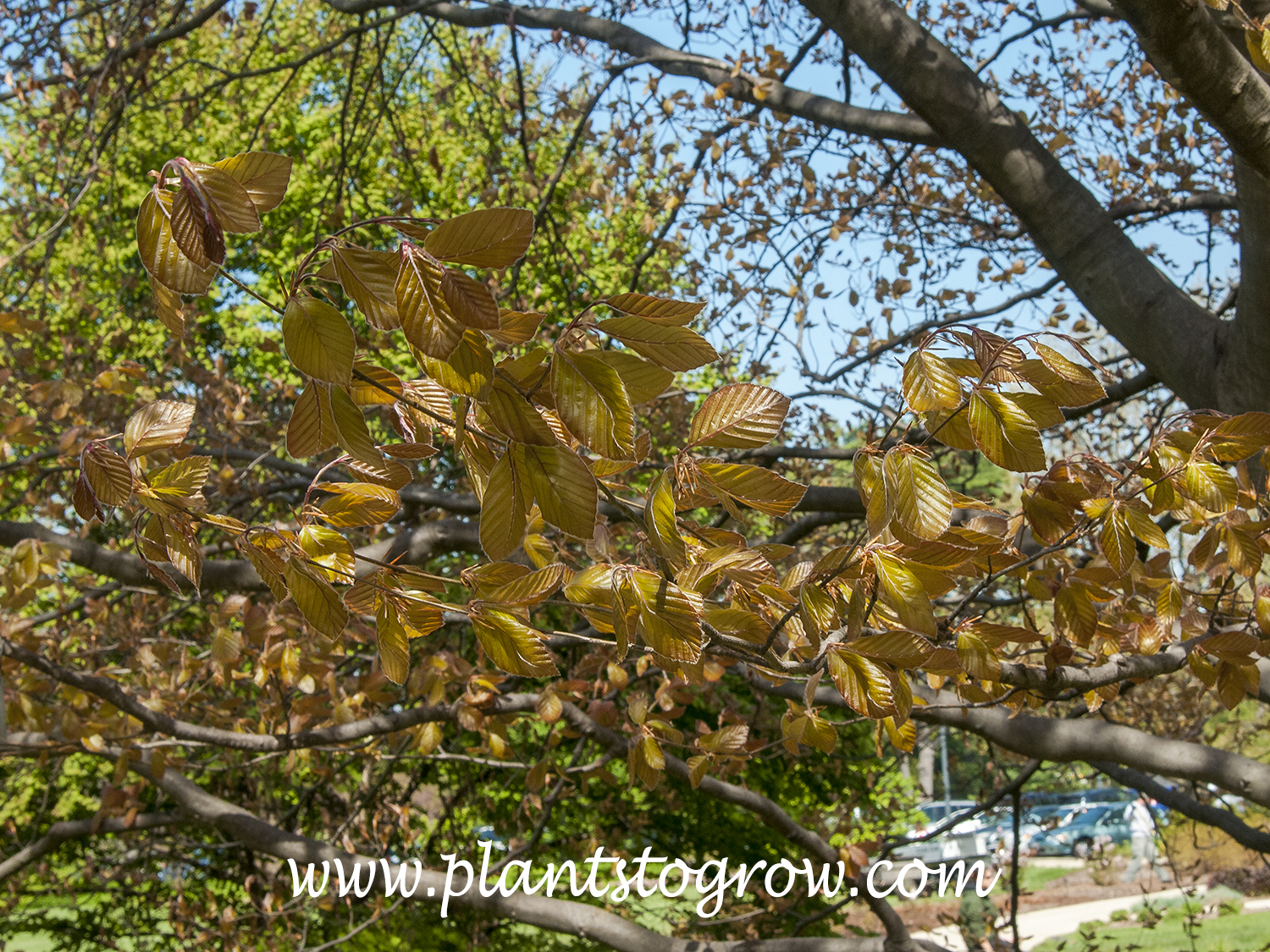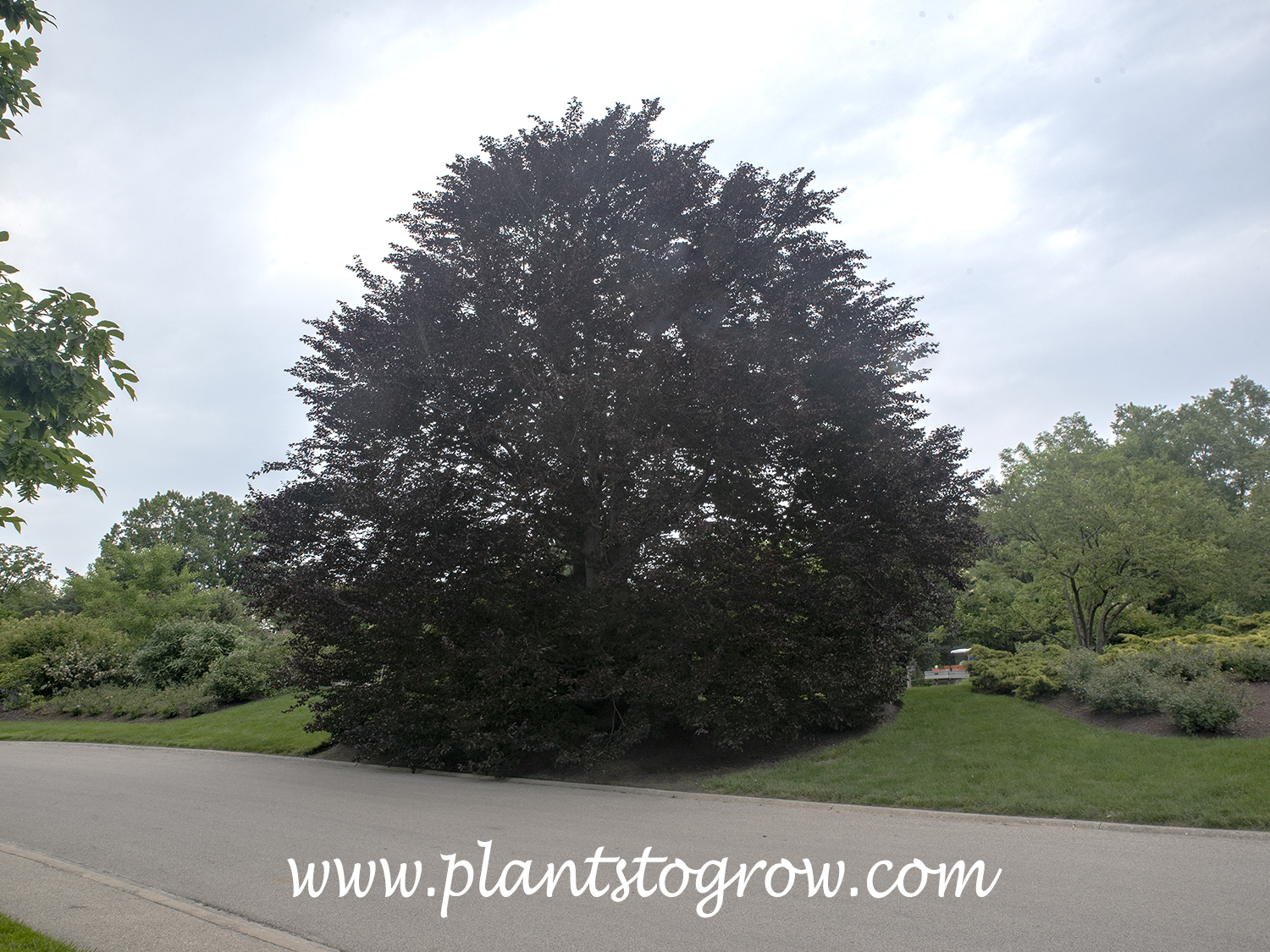| Description | Copper Beech (Fagus sylvatica atropunicea) A large tree with copper-colored leaves in the spring which to dark purple or reddish purple. |
|---|---|
| Pronunciation | (FA-gus)(sil-VAT-i-ka) |
| Plant Type | Trees Deciduous |
| Hardiness Zone | 5 |
| Sunlight | full, tolerates some shade |
| Moisture | average |
| Soil & Site | average |
| Fruit | four lobed husk, covered with bristles, triangular nuts |
| Leaves | simple, serrated copper to copper green in spring, changing to dark purple or reddish-purple. the color is often listed as a lighter purple |
| Roots | fibrous |
| Propagation | reported to come somewhat true from seed |
| Cultivar Origin | Originated from George Loddegis of Great Britain in 1836 (#245). He was a British gardener, artist, and naturalist. |
| Misc Facts | "Fagus is derived from Greek phegos (beech) or phago- (eating) component, and is the Latin name for 'beech tree'. Sylvatica means 'wild, of or from woods or forests". (#145) They are often listed in the Purpurea group of Beech. These are trees grown from Purple Beech seeds and then selected. |
| Author's Notes | There seems to be a lot of confusion about this plant; I have seen the copper-colored foliage in the early spring on more than one occasion but have seen it listed as only in the fall. Michael Dirr even said, "I have seen many trees labeled 'Cupea' (Copper Beech) that I have no idea of the correctness" (#01). Must be a botanical conundrum? |
| Notes & Reference | #01-Manual of Woody Landscape Plants (Michael Dirr), #03-The Hillier Manual of Trees and Shrubs (Hillier Nursery), #93-North American Landscape Trees (Arthur Lee Jacobson), #145-Plant Lives (Sue Eland) www.plantlives.com, #245-Trees for American Gardens (Donald Wyman) |

Cart



